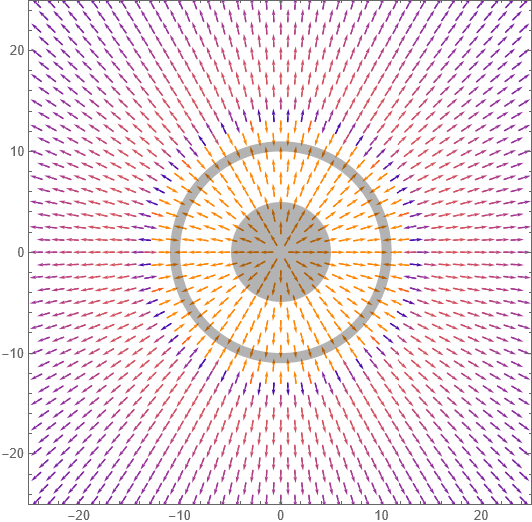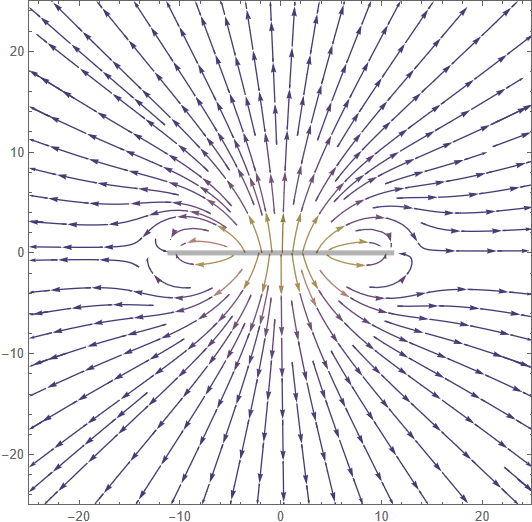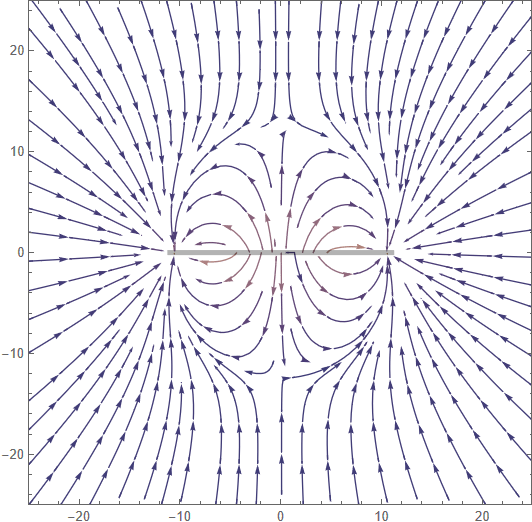Tsiolkovsky wrote: "Now, I'm struggling to figure out how this would look from the "top". I'm thinking straight, radial field lines which point outwards from the center disc towards the ring and beyond."
This is correct. In the first example below where the disk and the ring have opposite charges of equal magnitude the outward lines run from the disk to the ring, while the inward lines run from infinity to the ring.
Tsiolkovsky wrote: "Is there an intuitive way of visualizing electric fields?"
When viewed from the top you can draw the equatorial lines by intuition, from the side it is a little bit more complicated.
In the example below the outer ring has an inner radius of 10 and an outer radius of 11, while the inner disk has a radius of 5.
The code used is the one from here with a positive and a negative mass, which would give the same field lines like opposite electric charges. The equations in this case are elliptic integrals, they are too long to post them here but you can find them in the link above and in the references therein.
Ring and disk have opposite charges (Qʀ=-Qᴅ)
Top view of the field vectors:

Side view of the field vectors:

Side view stream plot:

Side view of constant field strength contours:

Ring charge is half the negative disk charge (Qʀ=-Qᴅ/2)
Top view of the field vectors:

Side view of the field vectors:

Side view stream plot:

Side view of constant field strength contours:

Ring charge is twice the negative disk charge (Qʀ=-2Qᴅ)
Top view of the field vectors:

Side view of the field vectors:

Side view stream plot:

Side view of constant field strength contours:

The code for the plots is here.













